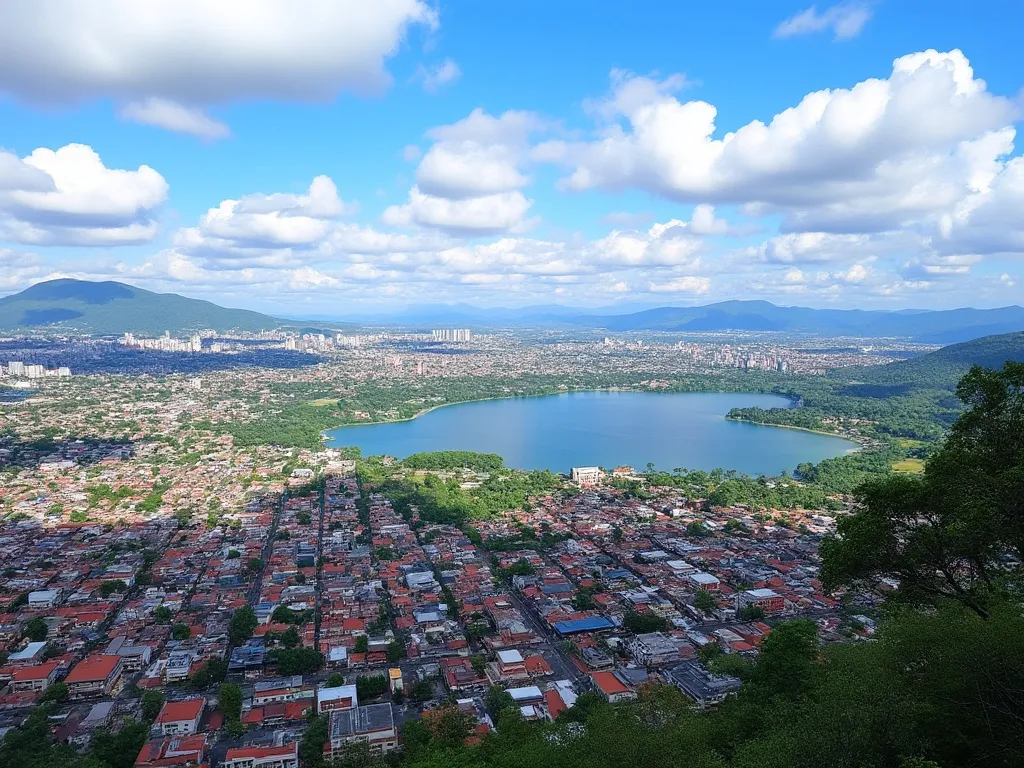
Malé, la capital de Maldivas, es una metrópolis bulliciosa ubicada en el borde sur del atolón Kaafu. Con una población de más de 133,000 personas, Malé es la ciudad más grande de Maldivas y sirve como el centro económico, cultural y administrativo del país.
Información sobre Malé
| País | 🇲🇻 Maldivas |
| Población | 133,412 (estimación 2020) |
| Coordenadas | 4°10′30″N 73°30′30″E |
| Área | 5.8 km² (2.2 sq mi) |
| Clima | Clima monzónico tropical |
| Idioma | Dhivehi (oficial), Inglés (ampliamente hablado) |
| Moneda | Rufiyaa maldiva (MVR) |
| Zona horaria | UTC+5 (Hora de Maldivas) |
| Proximidad a otras ciudades importantes | Colombo, Sri Lanka (430 km / 267 mi), Thiruvananthapuram, India (750 km / 466 mi) |
Antecedentes históricos de Malé
Malé tiene una rica historia que se remonta al siglo XII, cuando era un importante centro comercial en el Océano Índico. La ciudad fue un importante centro de producción de conchas de cauri, que se utilizaban como moneda en muchas partes de Asia. En el siglo XVI, Malé se convirtió en una colonia portuguesa, y más tarde, fue un protectorado británico desde 1887 hasta 1965. Maldivas obtuvo su independencia en 1965, y Malé se convirtió en la capital de la nación recién independiente.
Ubicación geográfica de Malé
Malé está ubicada en el borde sur del atolón Kaafu, que es uno de los atolones más grandes de Maldivas. La ciudad está situada en un arrecife de coral, y su terreno es generalmente plano y bajo. La ciudad está rodeada de arrecifes de coral, que proporcionan una barrera natural contra el océano y soportan una diversa variedad de vida marina.
Significado cultural de Malé
Malé es una ciudad culturalmente significativa en Maldivas, con una rica herencia de tradiciones y costumbres islámicas. La ciudad alberga muchas mezquitas históricas, incluida la Gran Mezquita del Viernes, que es una de las mezquitas más grandes de Maldivas. La ciudad también organiza muchos festivales y eventos culturales a lo largo del año, incluidos el Día del Pescador de Malé y el Día de la Independencia de Maldivas.
Importancia económica de Malé
Malé es el centro económico de Maldivas, con una diversa gama de industrias, incluidas la pesca, el turismo y la manufactura. La ciudad alberga muchas empresas importantes, incluida la Compañía de Pesca Industrial de Maldivas y la Organización Estatal de Comercio. El puerto de la ciudad también es un importante centro de comercio y comercio, con muchos barcos que pasan por el puerto de la ciudad todos los días.
Datos interesantes sobre Malé
- Malé es una de las ciudades más densamente pobladas del mundo, con una densidad de población de más de 45,000 personas por kilómetro cuadrado.
- La ciudad alberga el Museo Nacional de Maldivas, que muestra la historia y cultura del país.
- Malé es un destino popular para deportes acuáticos, incluidos el surf, el snorkel y el buceo.
- La ciudad organiza muchos eventos internacionales, incluidos el Maratón Internacional de Maldivas y el Festival Internacional de Cine de Malé.
Atracciones turísticas en Malé
- La Gran Mezquita del Viernes, una de las mezquitas más grandes de Maldivas.
- El Museo Nacional de Maldivas, que muestra la historia y cultura del país.
- El Mercado de Pescado de Malé, donde los visitantes pueden ver los famosos mariscos de la ciudad en exhibición.
- La Playa de Hulhumalé, un lugar popular para nadar y tomar el sol.
Conclusión sobre Malé
Malé, la capital de Maldivas, es una metrópolis vibrante y bulliciosa que ofrece una combinación única de cultura, historia y belleza natural. Desde su rica herencia cultural hasta sus impresionantes playas y arrecifes de coral, Malé es un destino de visita obligada para cualquiera que esté interesado en explorar Maldivas.
 Mamoudzou
Mamoudzou
 Managua
Managua
 Majuro
Majuro
 Malabo
Malabo